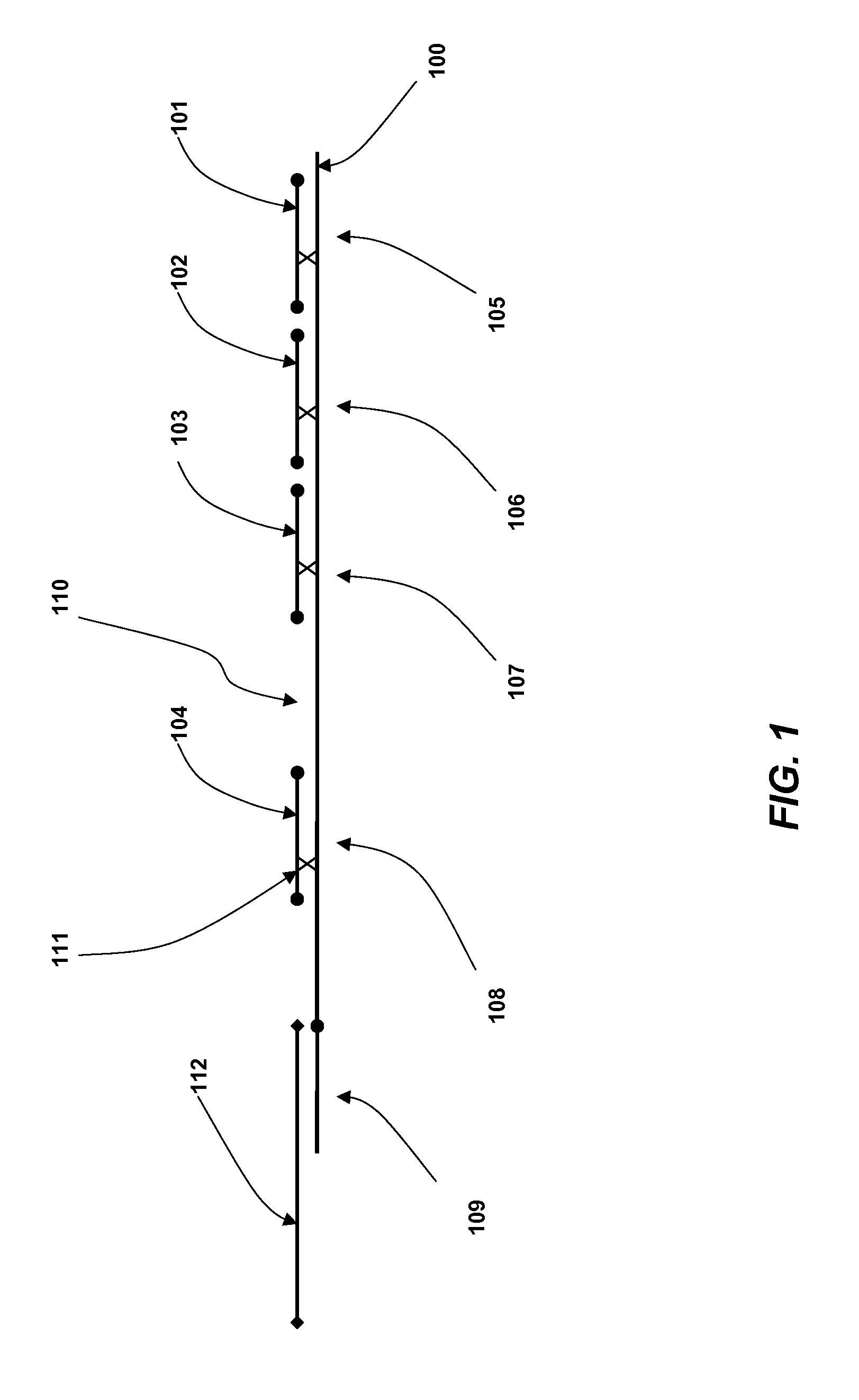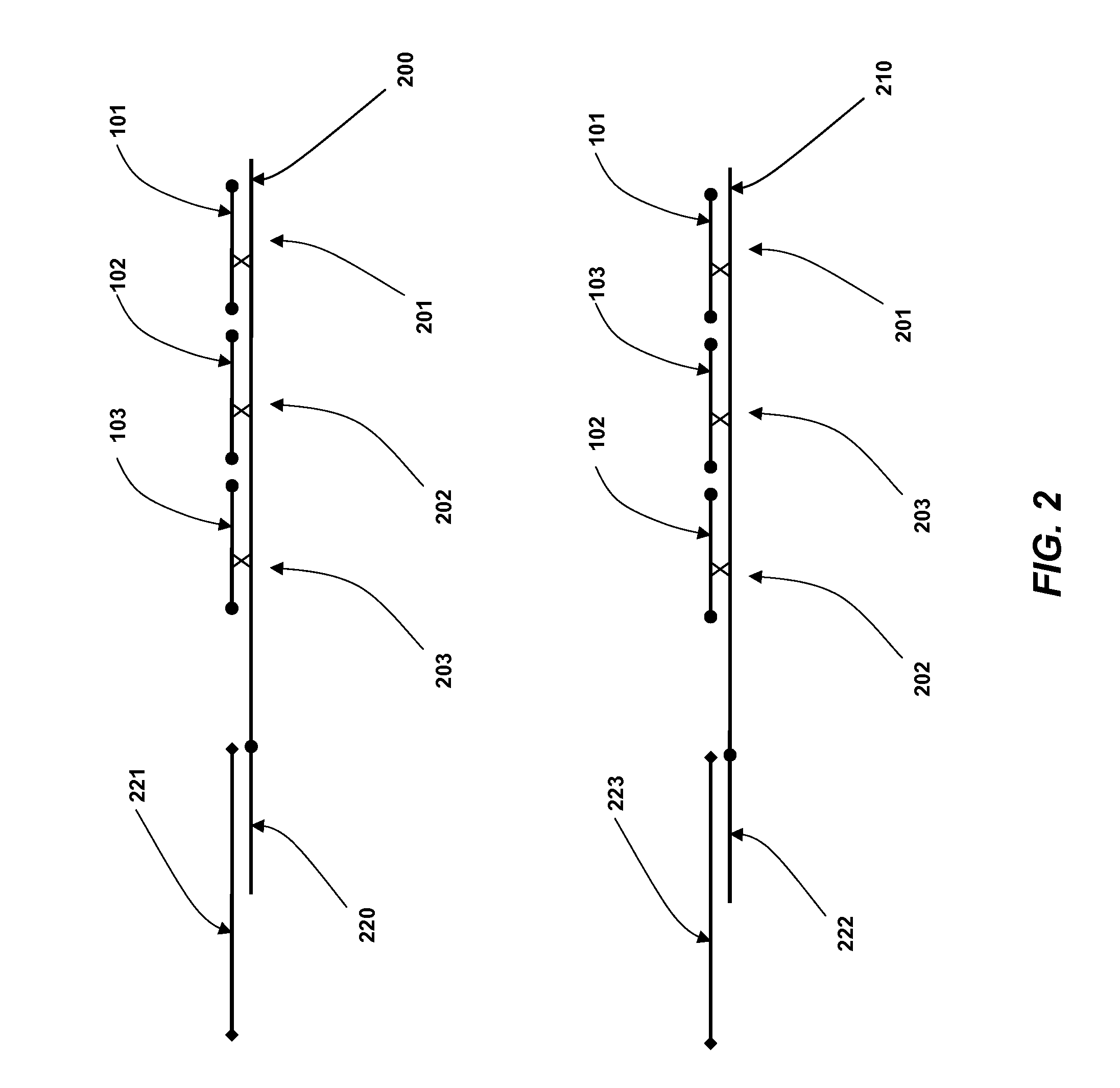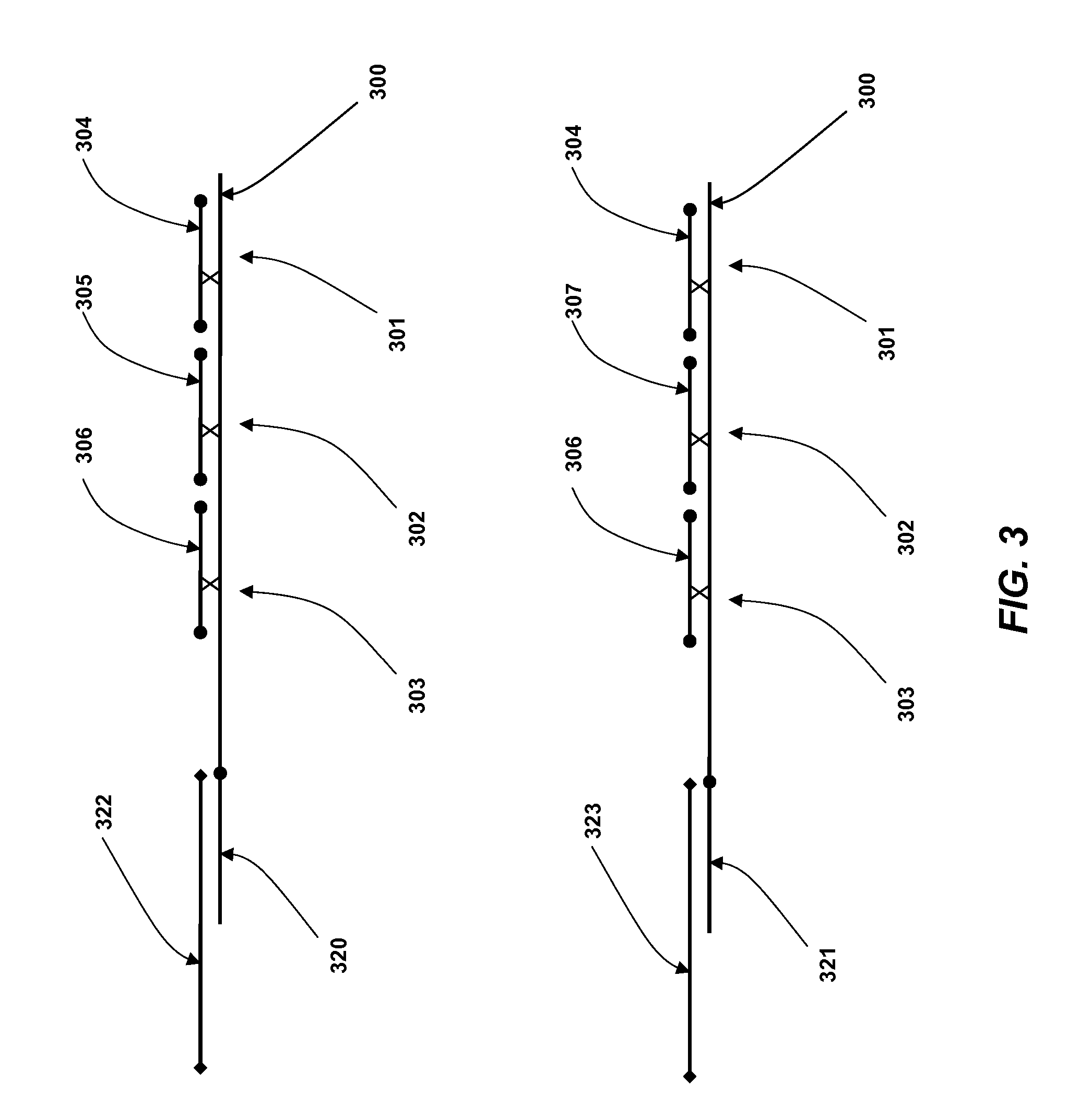Coded Molecules for Detecting Target Analytes
a technology of target analytes and coded molecules, which is applied in the direction of specific use bioreactors/fermenters, biomass after-treatment, biochemistry apparatus and processes, etc., can solve the problems of limiting the speed of assay, specificity, and sensitivity
- Summary
- Abstract
- Description
- Claims
- Application Information
AI Technical Summary
Benefits of technology
Problems solved by technology
Method used
Image
Examples
Embodiment Construction
[0023] It is to be understood that both the foregoing general description, including the drawings, and the following detailed description are exemplary and explanatory only and are not restrictive of this disclosure. In this disclosure, the use of the singular includes the plural unless specifically stated otherwise. Also, the use of “or” means “and / or” unless stated otherwise. Similarly, “comprise,”“comprises,”“comprising”“include,”“includes,” and “including” are not intended to be limiting.
[0024] It is to be further understood that where descriptions of various embodiments use the term “comprising,” those skilled in the art would understand that in some specific instances, an embodiment can be alternatively described using language “consisting essentially of” or “consisting of.”
[0025] The section headings used herein are for organizational purposes only and not to be construed as limiting the subject matter described.
[0026] 5.1 Definitions and Terms
[0027] As used throughout the...
PUM
| Property | Measurement | Unit |
|---|---|---|
| area | aaaaa | aaaaa |
| diameter | aaaaa | aaaaa |
| diameter | aaaaa | aaaaa |
Abstract
Description
Claims
Application Information
 Login to View More
Login to View More - R&D
- Intellectual Property
- Life Sciences
- Materials
- Tech Scout
- Unparalleled Data Quality
- Higher Quality Content
- 60% Fewer Hallucinations
Browse by: Latest US Patents, China's latest patents, Technical Efficacy Thesaurus, Application Domain, Technology Topic, Popular Technical Reports.
© 2025 PatSnap. All rights reserved.Legal|Privacy policy|Modern Slavery Act Transparency Statement|Sitemap|About US| Contact US: help@patsnap.com



